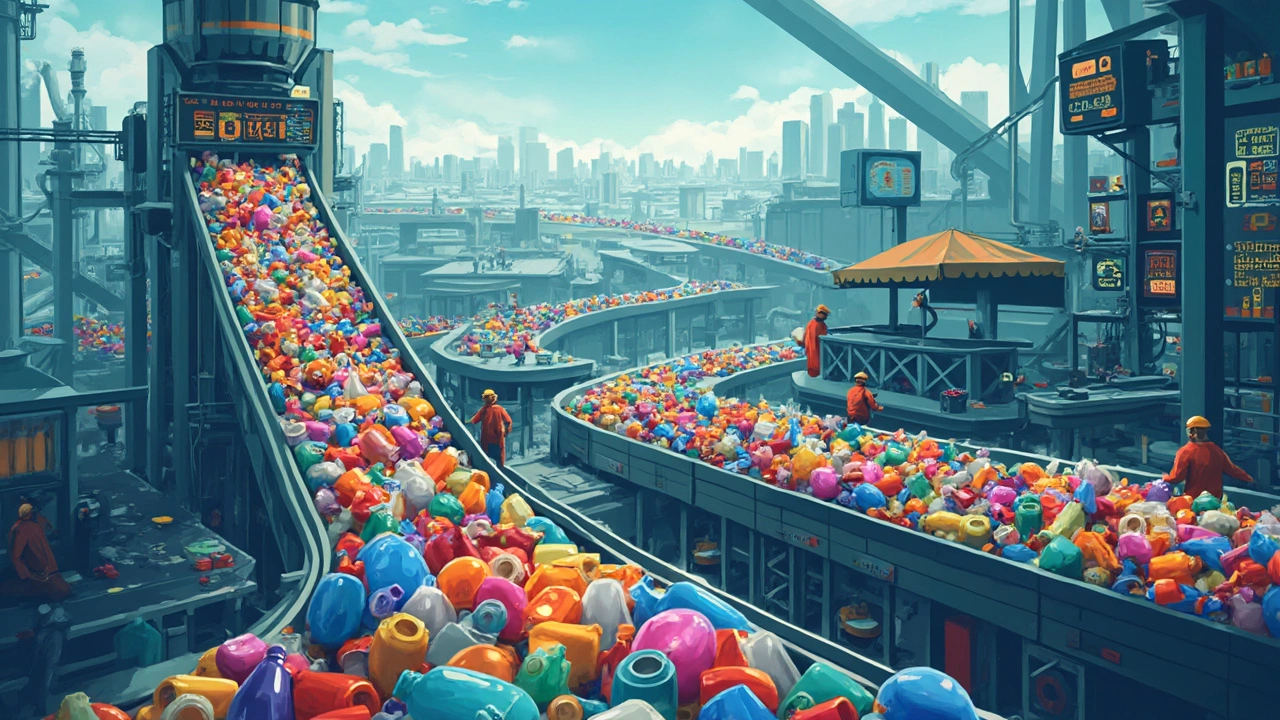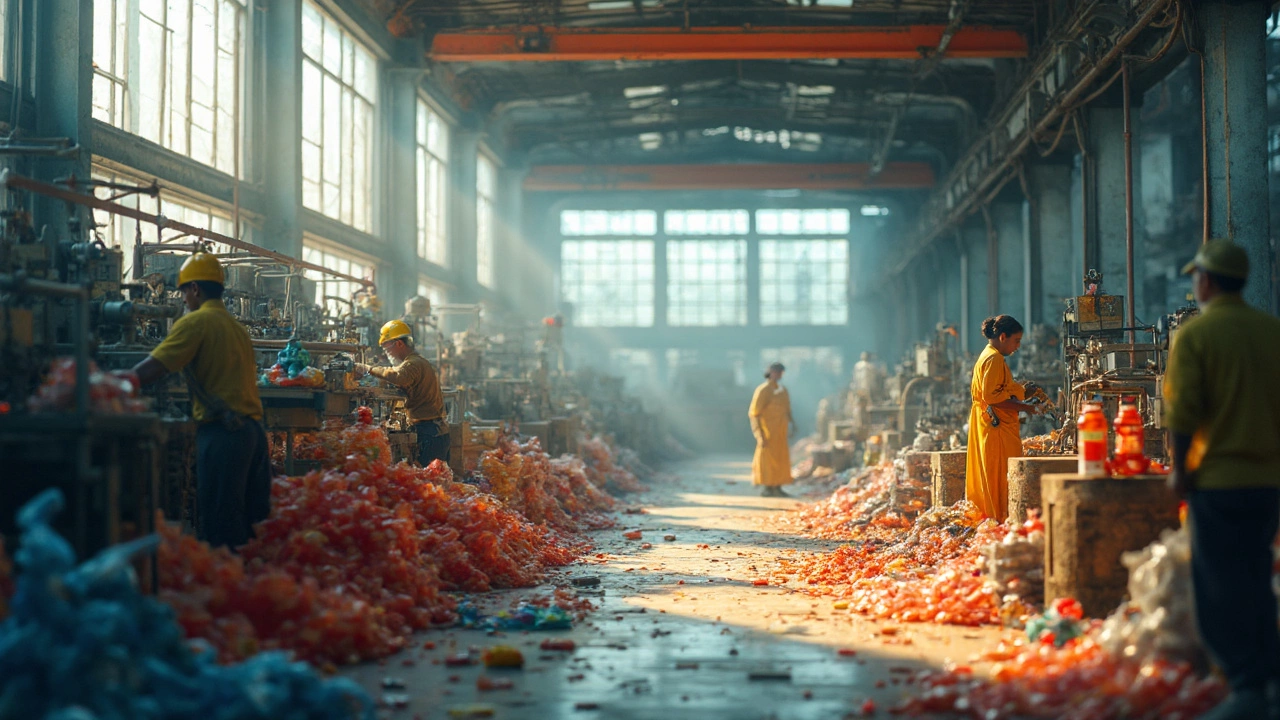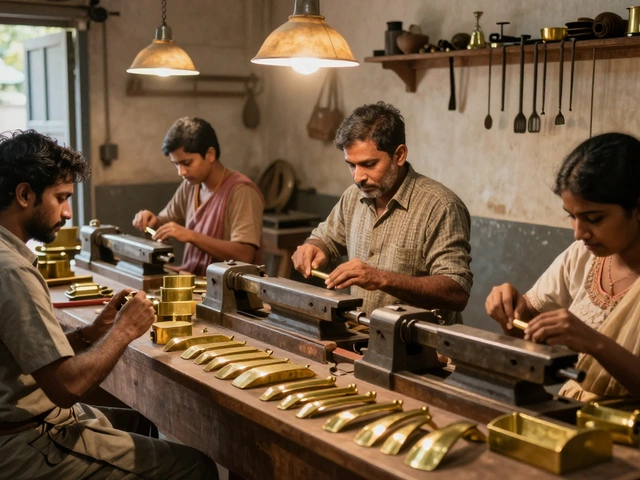Plastic Manufacturing: What It Is and Why It Matters
Plastic manufacturing is the process of turning raw polymers into the items we use every day – from water bottles to car parts. In India the sector is booming because cheap, lightweight materials are needed for everything from packaging to construction. If you’re curious about how a tiny plastic granule becomes a sturdy product, you’re in the right place.
First off, plastic doesn’t just appear out of thin air. It starts as resin pellets, tiny beads of polymer that factories buy from petrochemical plants. These pellets are the raw food for the whole production line. The magic happens when they are melted, shaped, and cooled. The steps are simple, but each one needs the right equipment and a good quality check.
Main Steps in Plastic Production
1. Melting and Mixing – The pellets go into an extruder, a big barrel that heats them up until they turn into a thick, syrup‑like melt. Additives like colour, UV stabilisers, or flame retardants are mixed in at this stage. This is where you decide if the final product will be clear, tough, or flexible.
2. Shaping – The molten plastic is forced through a die or mould. Common methods include injection moulding (for complex shapes like bottle caps), blow moulding (for hollow items like bottles), and extrusion (for pipes and sheets). Each technique has its own speed, cost, and design limits.
3. Cooling and Ejection – Once the plastic fills the mould, it needs to cool quickly so it holds its shape. Water sprays or air jets are used, then the solid part is popped out. A quick‑cool cycle means higher productivity and lower energy bills.
4. Finishing – The raw part may need trimming, drilling, or surface treatment. Quality inspectors check dimensions, strength, and visual defects. A good finish reduces waste and keeps customers happy.
Sustainable Practices & Future Trends
Plastic waste is a big headache, so Indian manufacturers are adopting greener methods. Recycling is moving from a side‑track to a core part of the process. Regrind – shredded scrap from previous runs – can be melted together with fresh resin, cutting down on raw material use.
Biodegradable polymers, like PLA made from corn starch, are also gaining traction. They behave like regular plastic during moulding but break down faster in the environment. Companies that invest in these materials often get a marketing edge and meet stricter government regulations.
Automation is another trend shaking up the sector. Robots can load and unload moulds faster than humans, reducing labour costs and improving consistency. Smart sensors now monitor temperature, pressure, and cycle time in real time, helping factories catch problems before they become costly defects.
If you’re thinking about starting a plastic business, focus on a niche you understand – maybe food‑grade containers or automotive trim. Keep an eye on the cost of resin, which swings with oil prices, and make sure you have a plan for waste handling. Partnering with a local recycler can turn scrap into a revenue stream.
In short, plastic manufacturing in India combines straightforward chemistry with high‑tech equipment. Knowing the basic steps, staying aware of sustainability moves, and embracing automation will keep you competitive in a market that’s only getting larger. Ready to turn those polymer pellets into profit? The tools are there – you just need to start shaping them.
Plastic Manufacturing Giants: Who Makes Most of the World's Plastic?
If you've ever wondered which companies are responsible for mountains of plastic around us, you're not alone. This article breaks down which corporations are at the heart of the global plastic production machine, and why it matters. From household names to industry giants, discover who’s filling the world with plastic—and what it means for our planet. You'll also pick up handy insights on spotting products from these companies in your daily life. Understanding this could actually help you make smarter consumer choices.
Read MoreWhat Company Produces the Most Plastic in the US? The Big Players Uncovered
Ever wondered which company is responsible for most of the plastic made in the US? This article digs into the number one producer, what drives its massive output, and how that affects your daily life. Expect real numbers, market insights, and some surprising facts about plastic's journey from factories to your hands. You'll get a look at big competitors trying to catch up and some tips on how big businesses manage their plastic footprint. Stick around to see who tops the list and why that matters for everyone.
Read MoreWhich Plastic Is in Demand: A Spotlight on Popular Plastics
In today's fast-paced world, certain types of plastics are in high demand due to their unique properties and applications. This article delves into the most sought-after plastics in the manufacturing industry, exploring their uses, benefits, and why they are favored by manufacturers. Learn about the plastics that are shaping our modern world and the reasons behind their popularity. The article also provides insights into trends and innovations driving the demand for specific plastics.
Read More






